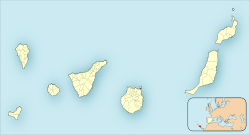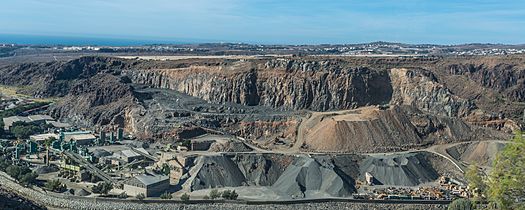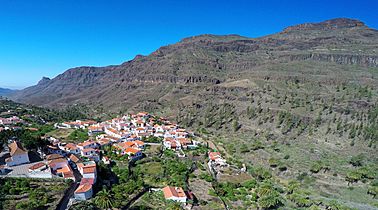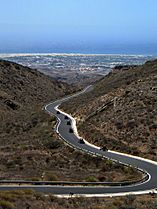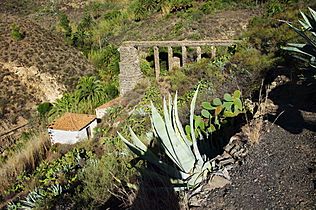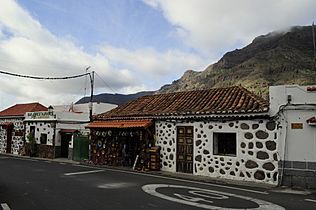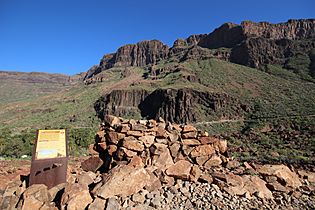Fataga facts for kids
Quick facts for kids
Fataga
|
|
|---|---|
|
Village
|
|
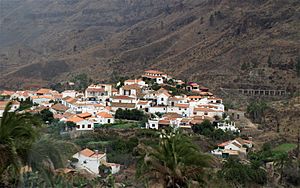
Fataga, with the canal de Fataga on the right
|
|
| Country | |
| Autonomous Community | |
| Province | Las Palmas |
| Island | Gran Canaria |
| Municipality | San Bartolomé de Tirajana |
| Elevation
(AMSL)
|
600 m (2,000 ft) |
| Time zone | UTC+0 (CET) |
| • Summer (DST) | UTC+1 (CEST (GMT +1)) |
| Area code(s) | +34 (Spain) + 928 (Las Palmas) |
| Website | www.maspalomas.com |
Fataga is a small, charming village located on the island of Gran Canaria in the Canary Islands, Spain. It's part of the San Bartolomé de Tirajana area. This historic village is nestled in a beautiful valley and is a popular spot for visitors exploring the island.
A Glimpse into Fataga's Past
Fataga has a very long history, going back more than 2,000 years! Long ago, the area was home to the Guanches, who were the native people of the Canary Islands.
In the 1500s, the village was known as Adfatagad. This was around the time when the Guanches and the Spanish were fighting for control of the Canary Islands. Many important battles happened in and around the Fataga ravine during this time.
By the late 1800s, about 650 people lived in Fataga. They were mostly farmers, growing cereals, vegetables, and fruits. They also raised cattle. The village was able to support itself thanks to a large water source called "El Cercado de Fataga" or "Fuente Grande" (Great Spring).
What is Fataga Like Today?
Fataga is a very popular place for tourists who are staying in the coastal areas of Gran Canaria. It's a great spot for a day trip!
The village is known for its traditional look. It has old, narrow lanes paved with stones and beautiful historic Canarian houses. Because of its unique charm, Fataga is being considered as a World Heritage Site. The village is located in the Fataga ravine, which is often called the "valley of the thousand palms" because of its many palm trees and brown rocks.
The local church, dedicated to St. José, was built in 1880. Over the years, new farms and houses have been built. Farmers here often grow delicious fruits like oranges, lemons, apricots, and grapes. However, the number of people living in the village has now dropped to around 265.
Fataga has three restaurants, places for tourists to visit, one of the oldest bakeries on the island, and even a watermill. You can find small artisan shops near the church and the bakery, selling local crafts. Not far from Fataga, on the way from Maspalomas, you can also find the Arteara necropolis, an ancient burial ground.
See also
 In Spanish: Fataga para niños
In Spanish: Fataga para niños


